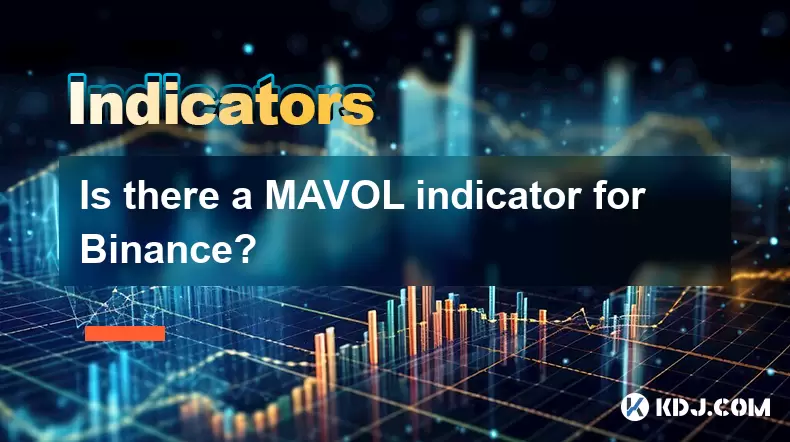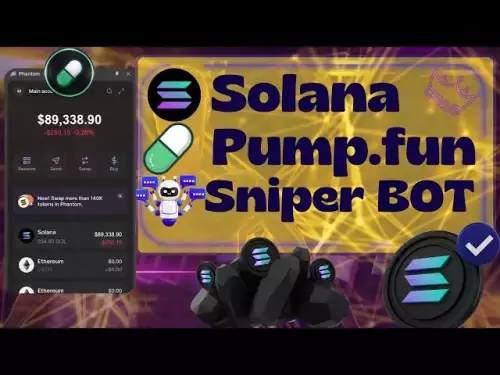-
 Bitcoin
Bitcoin $115100
-1.30% -
 Ethereum
Ethereum $4758
-1.70% -
 XRP
XRP $3.027
-2.19% -
 Tether USDt
Tether USDt $0.9998
-0.01% -
 BNB
BNB $883.2
-1.42% -
 Solana
Solana $204.0
2.62% -
 USDC
USDC $1.000
0.02% -
 Dogecoin
Dogecoin $0.2371
-0.97% -
 TRON
TRON $0.3612
-1.24% -
 Cardano
Cardano $0.9128
-2.19% -
 Chainlink
Chainlink $26.13
-3.93% -
 Hyperliquid
Hyperliquid $44.73
0.90% -
 Sui
Sui $3.715
-0.56% -
 Stellar
Stellar $0.4153
-2.41% -
 Ethena USDe
Ethena USDe $1.000
-0.04% -
 Bitcoin Cash
Bitcoin Cash $588.9
-2.06% -
 Avalanche
Avalanche $25.91
3.27% -
 Hedera
Hedera $0.2525
-1.45% -
 Litecoin
Litecoin $120.9
-1.35% -
 UNUS SED LEO
UNUS SED LEO $9.607
0.30% -
 Toncoin
Toncoin $3.382
-0.31% -
 Shiba Inu
Shiba Inu $0.00001329
-0.38% -
 Uniswap
Uniswap $11.38
-1.67% -
 Polkadot
Polkadot $4.222
2.83% -
 Aave
Aave $354.5
4.93% -
 Dai
Dai $0.0000
0.00% -
 Bitget Token
Bitget Token $4.704
-1.49% -
 Cronos
Cronos $0.1565
1.83% -
 Ethena
Ethena $0.7463
1.55% -
 Monero
Monero $265.8
-0.39%
Is there a MAVOL indicator for Binance?
On Binance, the MAVOL indicator can be created by applying a moving average to volume via TradingView, helping traders analyze volume trends and confirm price movements.
Aug 13, 2025 at 11:35 am

Understanding the MAVOL Indicator in Cryptocurrency Trading
The MAVOL indicator, short for Moving Average of Volume, is a technical analysis tool used to smooth out volume fluctuations over a specified period. It helps traders identify trends in trading volume by applying a moving average to historical volume data. In the context of Binance, one of the world's largest cryptocurrency exchanges, traders often seek tools like MAVOL to analyze market sentiment and anticipate potential breakouts or reversals. While Binance does not officially label an indicator as "MAVOL," the functionality is achievable through built-in tools.
Binance’s built-in charting platform, powered by TradingView, allows users to apply moving averages directly to volume. This means that even if the term "MAVOL" isn’t explicitly listed, the concept and calculation are fully supported. By selecting the volume indicator and applying a moving average overlay, users effectively create a MAVOL indicator. This is particularly useful for confirming price trends — for instance, rising volume averages during an uptrend may signal strong buying pressure.
How to Access Volume and Moving Averages on Binance
To replicate the MAVOL indicator on Binance, follow these steps:
- Log in to your Binance account and navigate to the Spot Trading interface.
- Select a trading pair, such as BTC/USDT, to open the charting window.
- Below the main price chart, locate the Volume indicator, which appears as a histogram.
- Click on the "Indicators" button located at the top of the chart.
- Search for "Volume" in the indicator search bar and ensure it is active.
- With the volume displayed, click on the "fx" (functions) button next to the indicator name.
- Choose "Add to Volume" and then select "Moving Average" from the overlay options.
- Configure the moving average settings, such as period (commonly 9, 20, or 50) and type (SMA or EMA).
After these steps, a moving average line will appear over the volume bars, effectively creating the MAVOL indicator. This line helps visualize average volume trends, making it easier to detect surges or declines in market activity.
Customizing the MAVOL Indicator for Better Analysis
Customization enhances the utility of the MAVOL indicator. Users can adjust several parameters to suit their trading strategy:
- Change the moving average type to Simple (SMA), Exponential (EMA), or Weighted (WMA) depending on sensitivity needs. EMA responds faster to recent volume changes, making it ideal for short-term traders.
- Modify the length or period of the moving average. A shorter period like 9 highlights recent volume spikes, while a longer period like 50 offers a broader view of volume trends.
- Adjust the color and thickness of the MAVOL line for better visibility against the volume histogram.
- Apply multiple MAVOL lines with different periods to identify crossovers, which may signal shifts in volume momentum.
These adjustments are made within the indicator settings panel after adding the moving average to volume. Traders can save their customized MAVOL setup as a template for future use across different trading pairs.
Interpreting MAVOL Signals in Market Context
The MAVOL indicator provides actionable insights when interpreted alongside price action. Key signals include:
- A rising MAVOL line during an uptrend suggests increasing buying volume, reinforcing the strength of the trend.
- A declining MAVOL line during a price rise may indicate weakening volume support, warning of a potential reversal.
- Spikes in volume that exceed the MAVOL line can signal strong market interest, often preceding breakouts.
- Crossovers between short-term and long-term MAVOL lines (if multiple are applied) can highlight shifts in volume momentum.
For example, if Bitcoin’s price climbs on volume significantly above the 20-period MAVOL, it suggests strong conviction among buyers. Conversely, a price increase on volume below the MAVOL average may reflect a lack of broad participation, increasing the risk of a pullback.
Limitations and Workarounds on Binance
While Binance supports the creation of a MAVOL-like indicator, there are limitations:
- Binance does not offer a pre-built "MAVOL" indicator, requiring manual setup each time unless saved as a template.
- The platform relies on TradingView’s web-based charting, which may experience latency during high volatility.
- Mobile app functionality may restrict access to advanced customization compared to the desktop version.
- Some users report delays in volume data updates, which could affect the accuracy of real-time MAVOL analysis.
To mitigate these issues, traders can:
- Save customized MAVOL configurations as chart templates for quick reloading.
- Use Binance’s desktop platform for full access to indicator settings.
- Cross-verify volume trends with on-chain data or third-party tools like CoinGlass or CryptoQuant for confirmation.
Alternative Tools and Scripts for MAVOL-Like Analysis
Traders seeking more advanced volume analysis can explore Pine Script on TradingView, which is integrated into Binance’s charts. By writing or importing a custom script, users can automate the MAVOL calculation with additional features:
- Create alerts when volume crosses above or below the MAVOL line.
- Combine MAVOL with other indicators like RSI or MACD for multi-dimensional analysis.
- Plot MAVOL as a standalone oscillator beneath the main chart for cleaner visualization.
To use Pine Script:
- Open the Pine Editor via the "Indicators" menu.
- Write a script that defines volume and applies a moving average:
//@version=5
indicator("Custom MAVOL", overlay=false)
volMA = ta.sma(volume, 20)
plot(volMA, color=color.orange, title="MAVOL 20") - Click "Add to Chart" to apply the script.
This method offers greater flexibility than the built-in tools and can be tailored to specific trading strategies.
Frequently Asked Questions
Can I use the MAVOL indicator on Binance futures charts?
Yes, the same process applies to Binance Futures. Navigate to the futures trading interface, open the chart for a contract (e.g., BTCUSDT Perpetual), and follow the same steps to add a moving average to volume. The functionality is identical to the spot market.
Is the MAVOL indicator available on the Binance mobile app?
Yes, but with limitations. On the mobile app, you can add the volume indicator and apply a moving average through the "Indicators" menu. However, advanced customization like script editing or complex overlays may not be fully supported.
Why doesn’t Binance have a pre-labeled MAVOL indicator?
Binance uses TradingView’s standard indicator library, which does not list "MAVOL" as a standalone tool. However, the functionality is replicated by combining volume and moving average indicators, which is a common practice across many platforms.
Can I set alerts based on MAVOL crossovers?
Direct alerts on MAVOL crossovers are not available through Binance’s native tools. However, by using Pine Script on TradingView, you can code alert conditions (e.g., volume crossing above MAVOL) and receive notifications when triggered.
Disclaimer:info@kdj.com
The information provided is not trading advice. kdj.com does not assume any responsibility for any investments made based on the information provided in this article. Cryptocurrencies are highly volatile and it is highly recommended that you invest with caution after thorough research!
If you believe that the content used on this website infringes your copyright, please contact us immediately (info@kdj.com) and we will delete it promptly.
- XYZVerse, Shiba Inu, and the 2025 Bull Cycle: A Meme Coin Evolution
- 2025-08-24 13:05:12
- WLFI Token, BingX, and the Trading Landscape: A New York Perspective
- 2025-08-24 12:45:20
- Aave, Governance, Allocation: Navigating DeFi's Shifting Sands
- 2025-08-24 12:45:20
- Crypto Coins in 2025: Meme Coins, Undervalued Blockchains, and Bull Run Predictions
- 2025-08-24 13:05:12
- Fed Pivot Ignites Crypto Rally: Altcoins Set to Outperform?
- 2025-08-24 13:25:12
- Eric Trump, Tokyo, and Metaplanet: A Bitcoin Bonanza?
- 2025-08-24 11:05:13
Related knowledge

What does it mean when the +DI and -DI cross frequently in the DMI indicator but the ADX is flattening?
Aug 11,2025 at 03:15am
Understanding the DMI Indicator ComponentsThe Directional Movement Index (DMI) is a technical analysis tool composed of three lines: the +DI (Positive...

What does the sudden appearance of a "dark cloud cover" candlestick pattern during an uptrend indicate?
Aug 13,2025 at 11:35am
Understanding the 'Dark Cloud Cover' Candlestick PatternThe dark cloud cover is a bearish reversal pattern in technical analysis that typically appear...

What does it mean when the moving average, MACD, and RSI all send buy signals simultaneously?
Aug 11,2025 at 01:42pm
Understanding the Convergence of Technical IndicatorsWhen the moving average, MACD, and RSI all generate buy signals at the same time, traders interpr...

What does it mean when both the KDJ indicator and the RSI show overbought signals simultaneously?
Aug 13,2025 at 11:35am
Understanding the KDJ Indicator in Cryptocurrency TradingThe KDJ indicator is a momentum oscillator derived from the Stochastic Oscillator, widely use...

What does it mean when the price is trading above the SAR indicator but the red dots are densely packed?
Aug 09,2025 at 11:49pm
Understanding the SAR Indicator and Its Visual SignalsThe SAR (Parabolic Stop and Reverse) indicator is a technical analysis tool used primarily to de...

What does it mean when the candlestick chart forms a "Morning Star" but trading volume is sluggish?
Aug 12,2025 at 06:28pm
Understanding the Morning Star Candlestick PatternThe Morning Star is a three-candle bullish reversal pattern commonly observed in cryptocurrency pric...

What does it mean when the +DI and -DI cross frequently in the DMI indicator but the ADX is flattening?
Aug 11,2025 at 03:15am
Understanding the DMI Indicator ComponentsThe Directional Movement Index (DMI) is a technical analysis tool composed of three lines: the +DI (Positive...

What does the sudden appearance of a "dark cloud cover" candlestick pattern during an uptrend indicate?
Aug 13,2025 at 11:35am
Understanding the 'Dark Cloud Cover' Candlestick PatternThe dark cloud cover is a bearish reversal pattern in technical analysis that typically appear...

What does it mean when the moving average, MACD, and RSI all send buy signals simultaneously?
Aug 11,2025 at 01:42pm
Understanding the Convergence of Technical IndicatorsWhen the moving average, MACD, and RSI all generate buy signals at the same time, traders interpr...

What does it mean when both the KDJ indicator and the RSI show overbought signals simultaneously?
Aug 13,2025 at 11:35am
Understanding the KDJ Indicator in Cryptocurrency TradingThe KDJ indicator is a momentum oscillator derived from the Stochastic Oscillator, widely use...

What does it mean when the price is trading above the SAR indicator but the red dots are densely packed?
Aug 09,2025 at 11:49pm
Understanding the SAR Indicator and Its Visual SignalsThe SAR (Parabolic Stop and Reverse) indicator is a technical analysis tool used primarily to de...

What does it mean when the candlestick chart forms a "Morning Star" but trading volume is sluggish?
Aug 12,2025 at 06:28pm
Understanding the Morning Star Candlestick PatternThe Morning Star is a three-candle bullish reversal pattern commonly observed in cryptocurrency pric...
See all articles

























































































